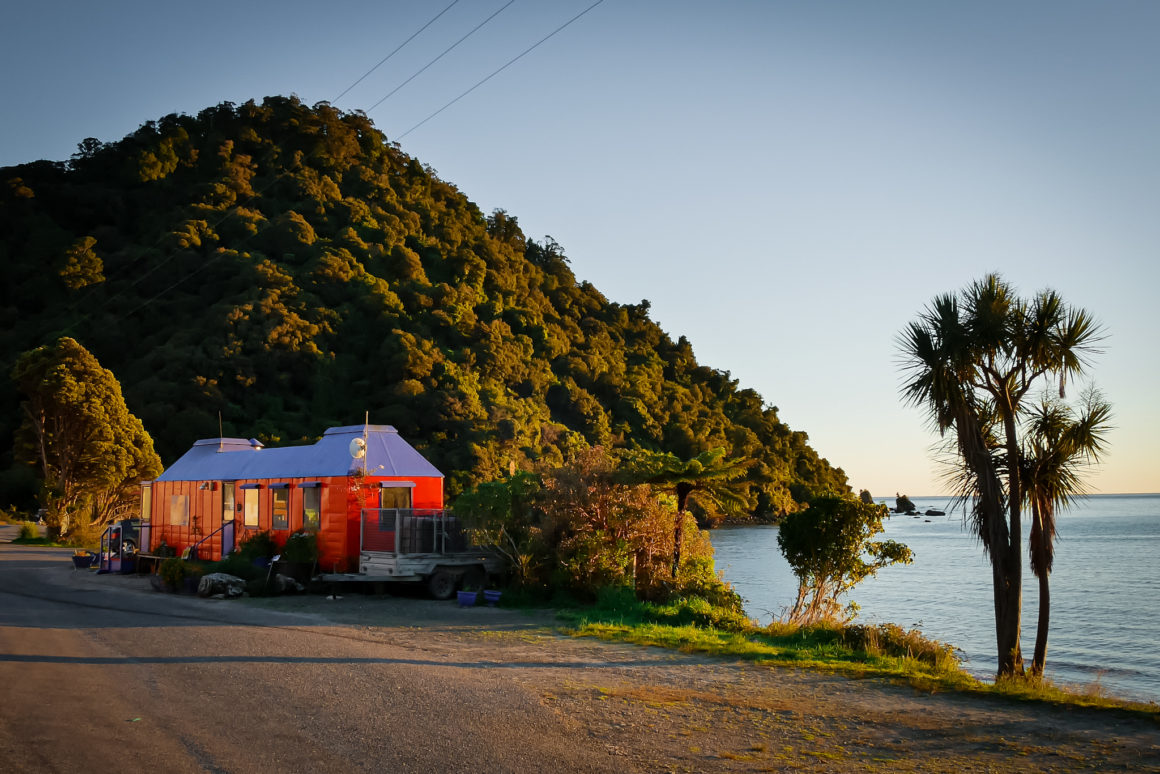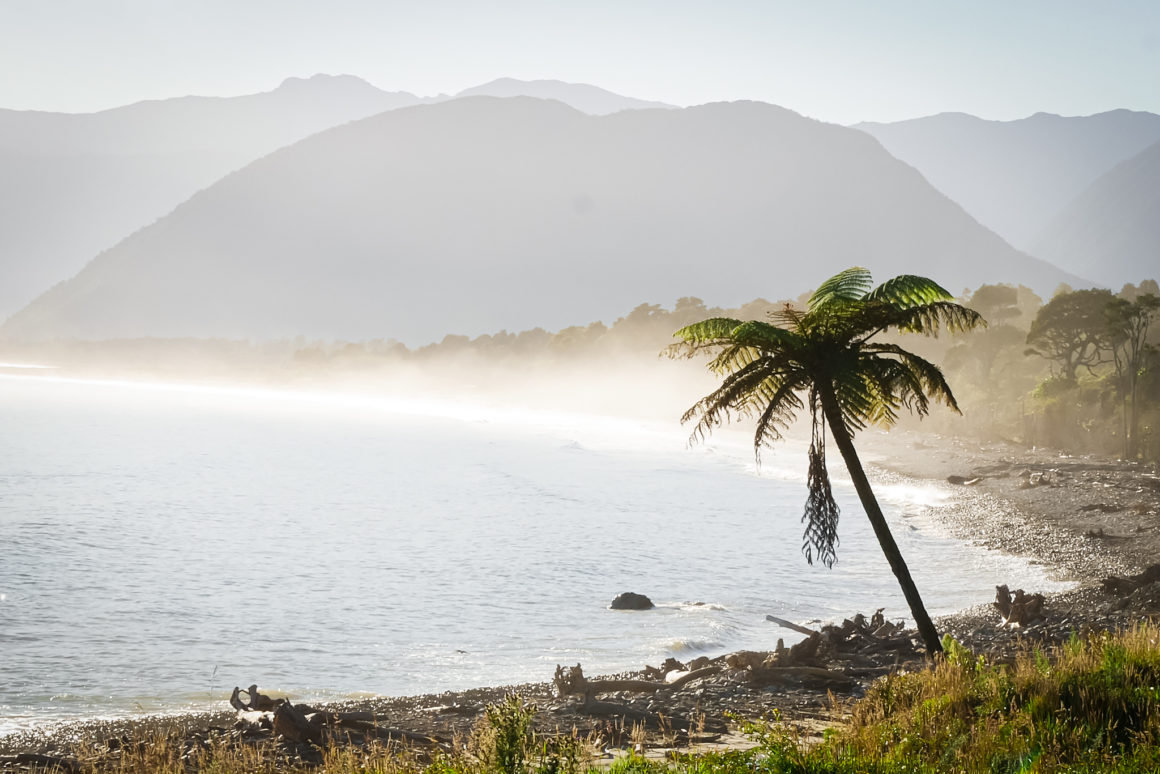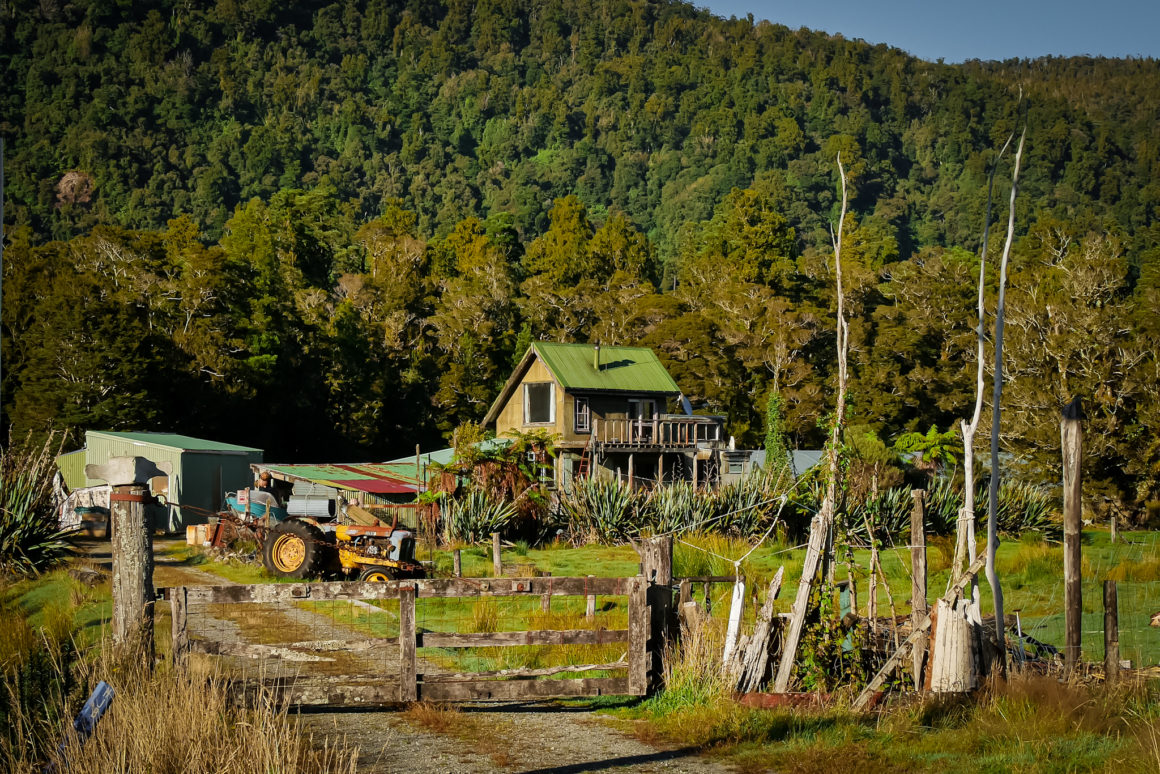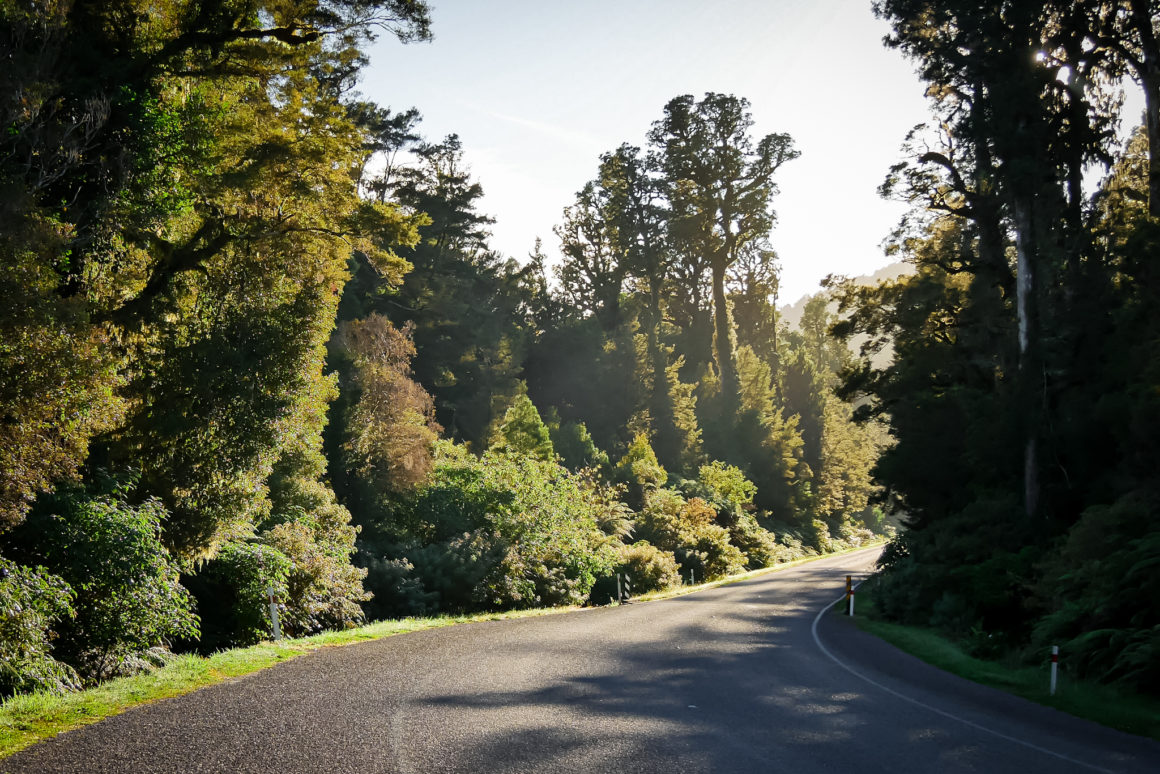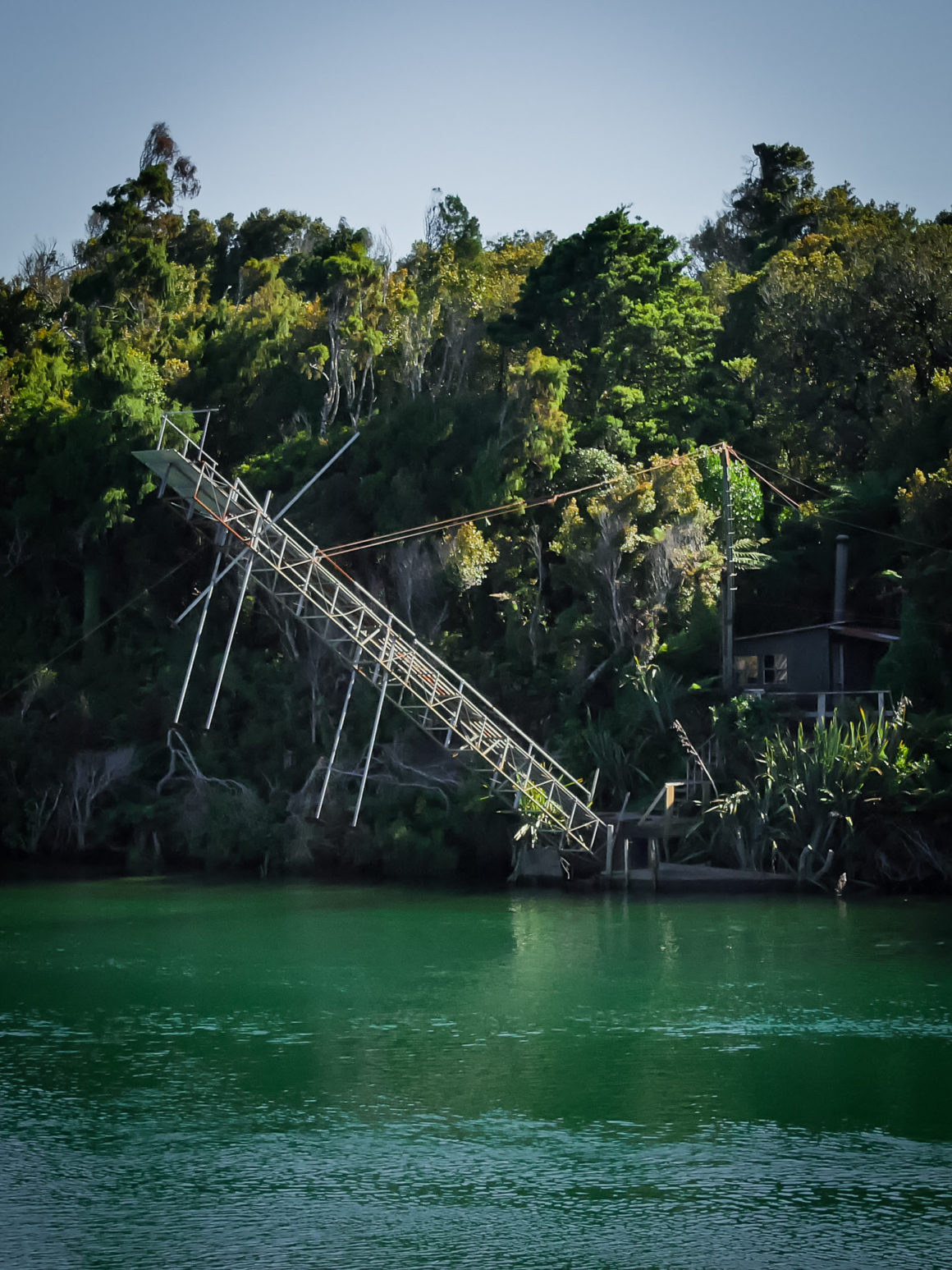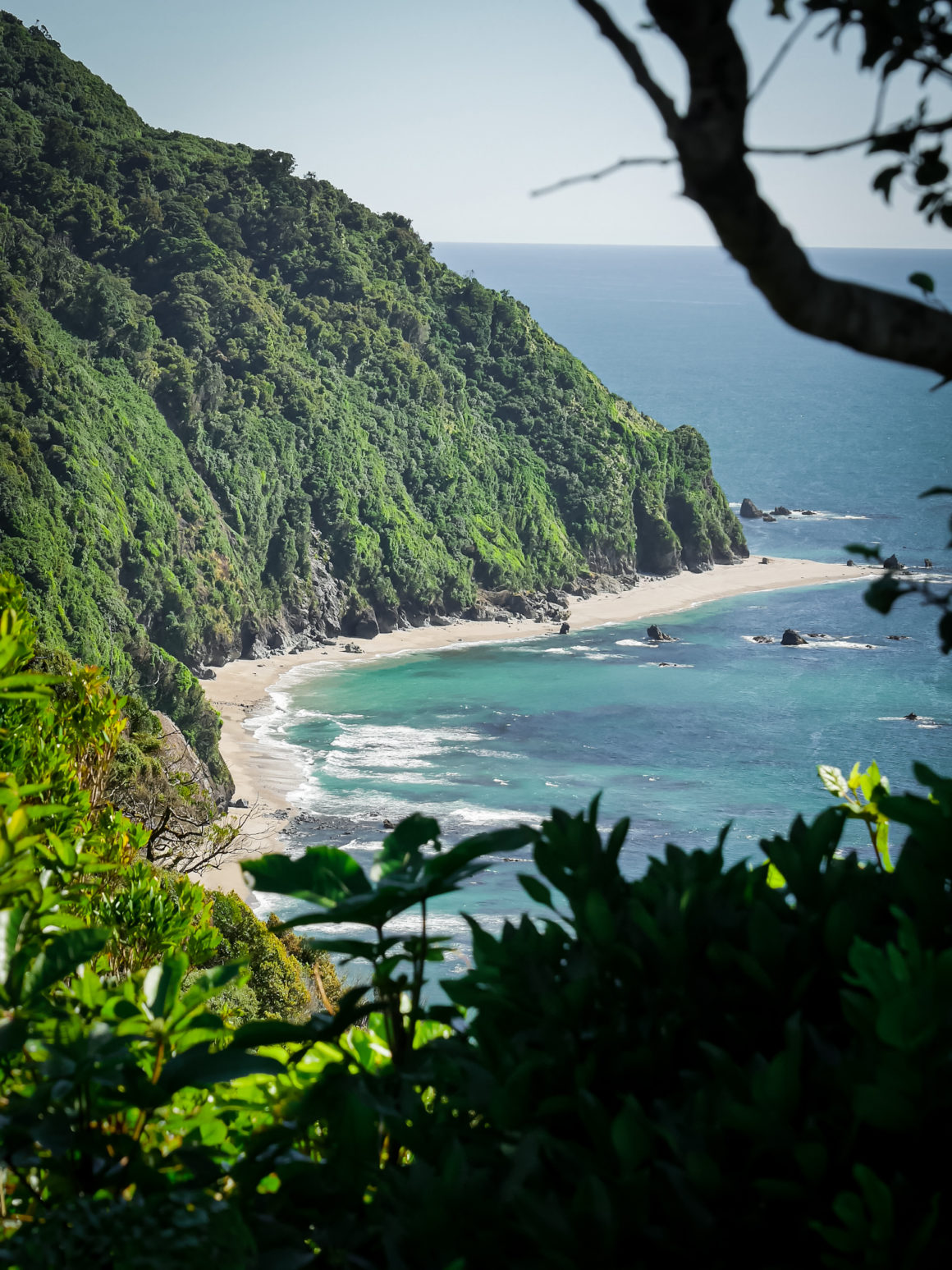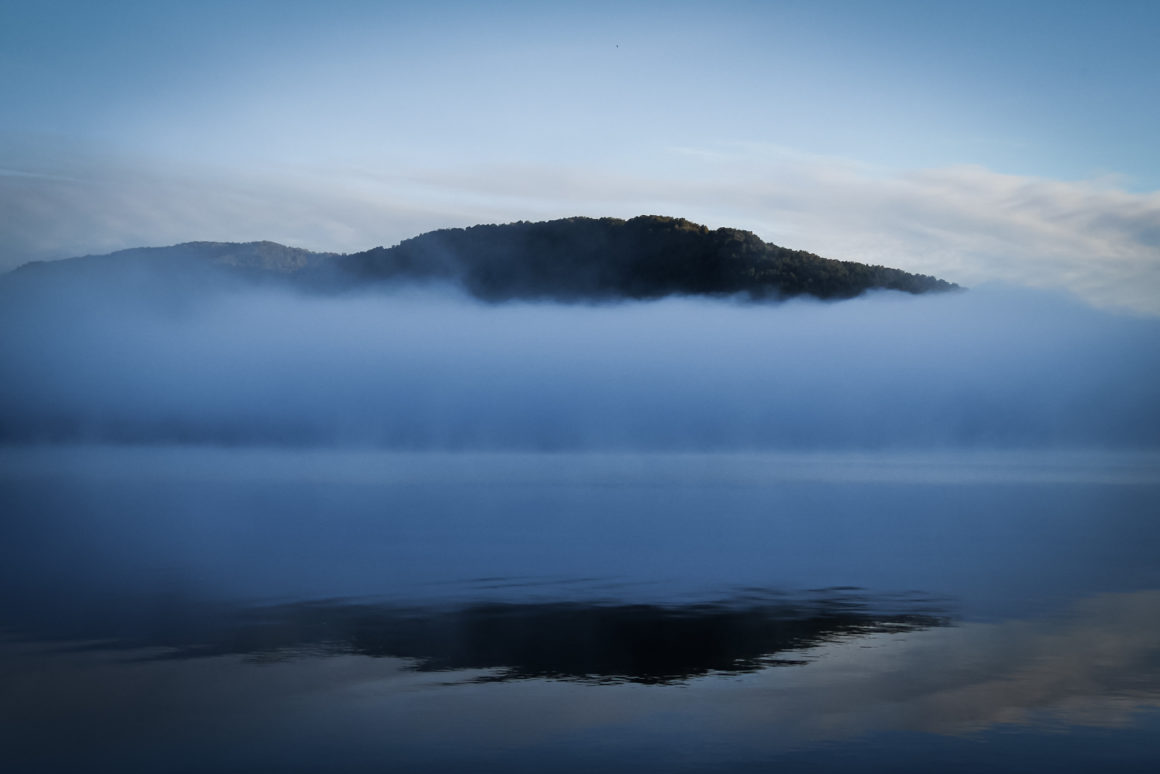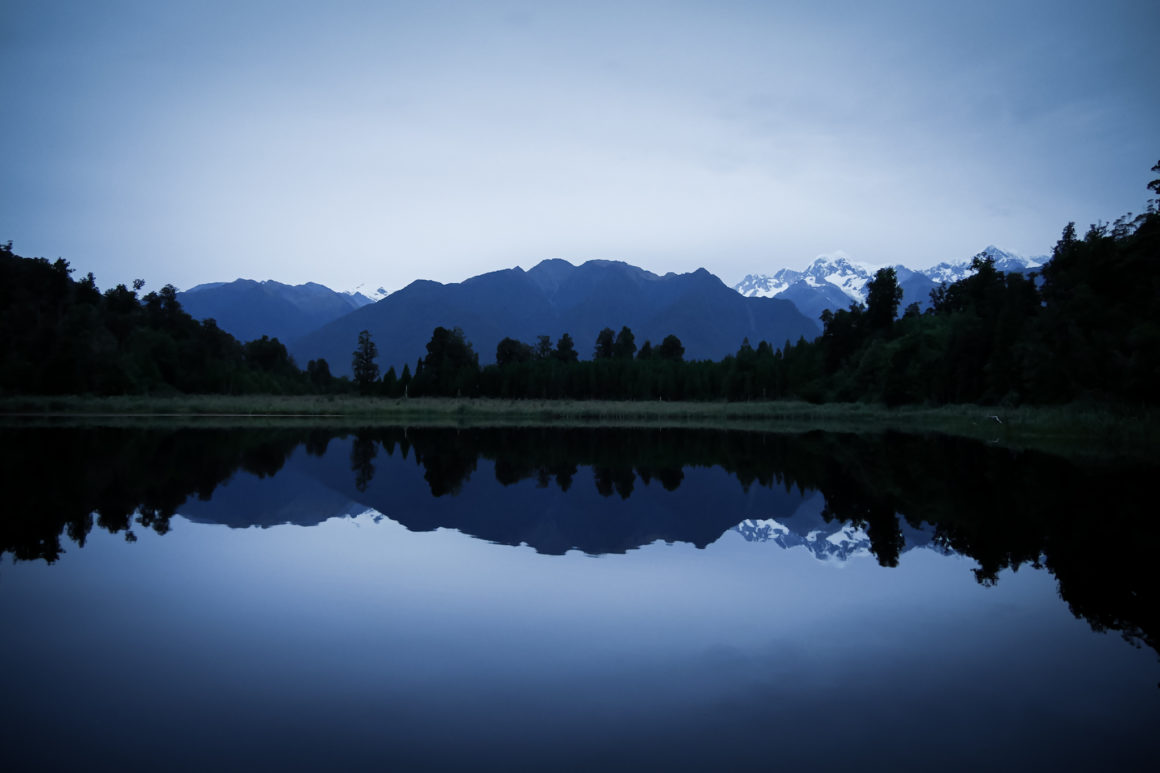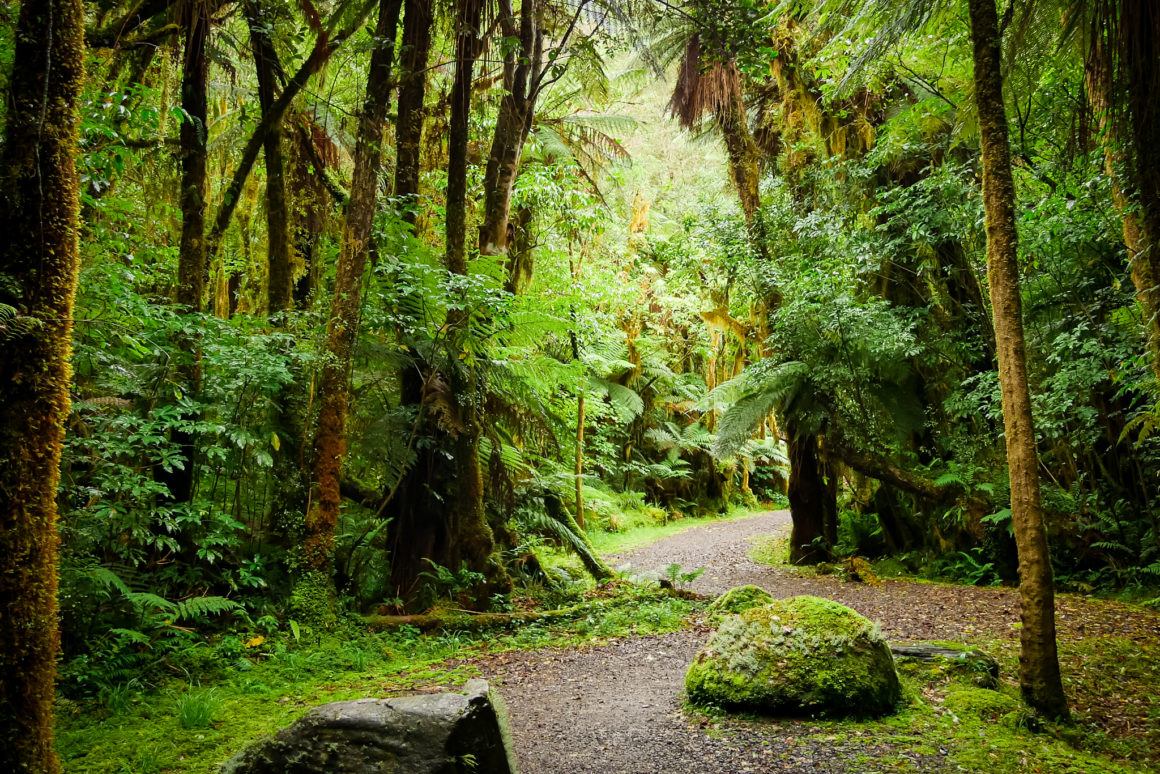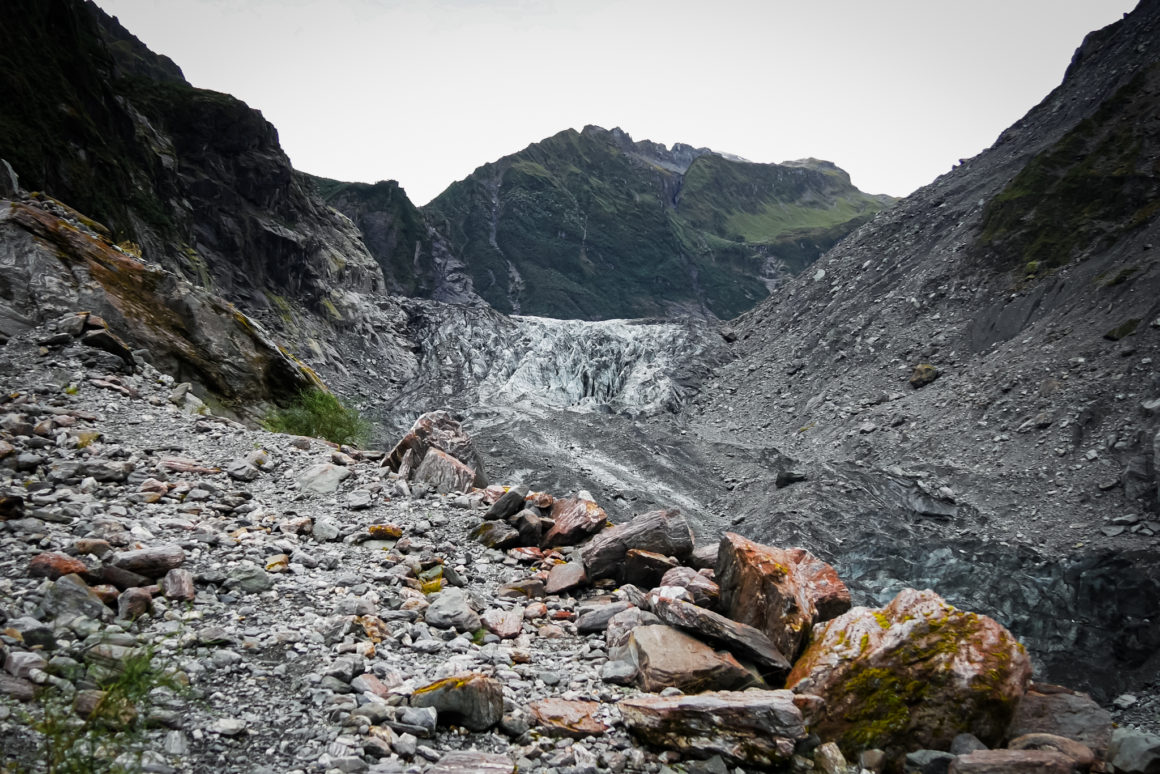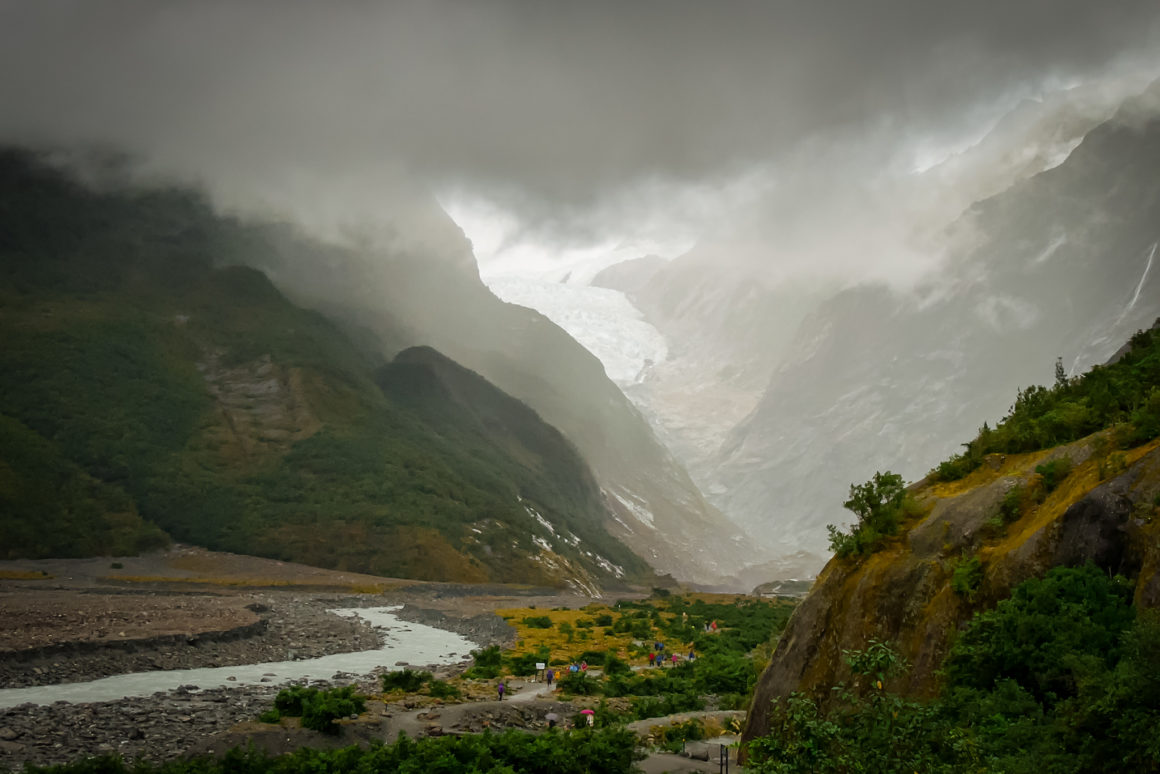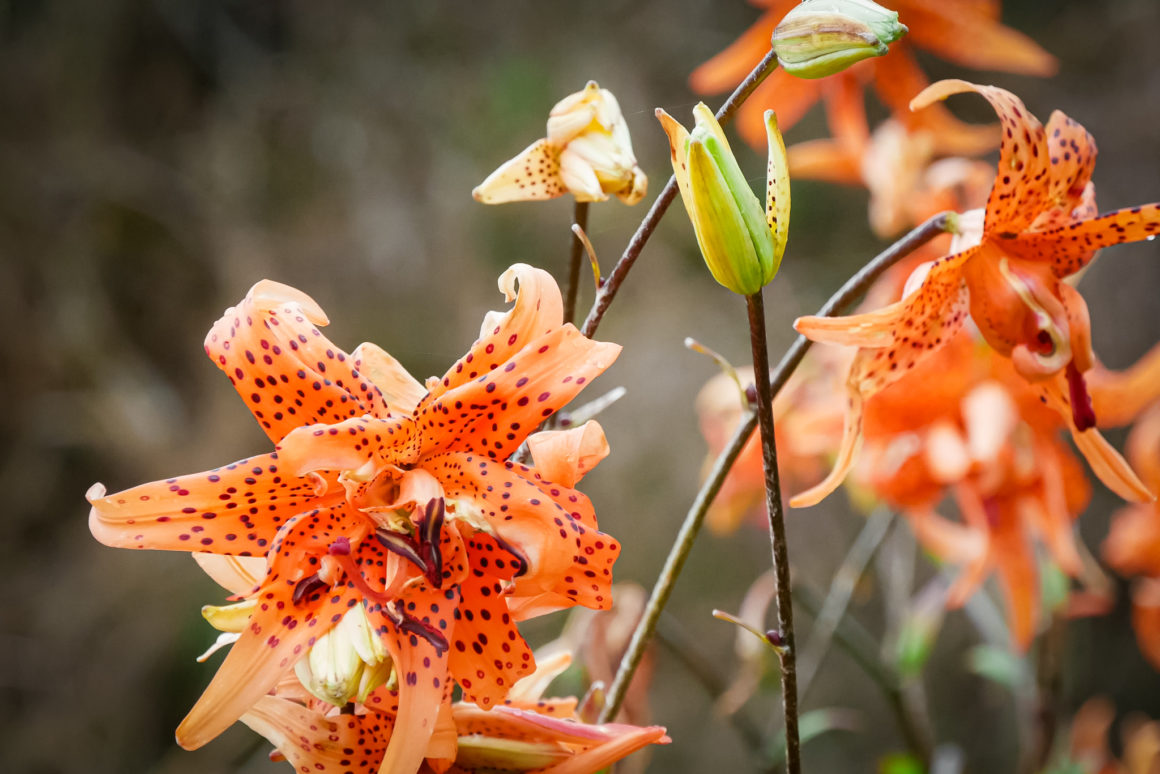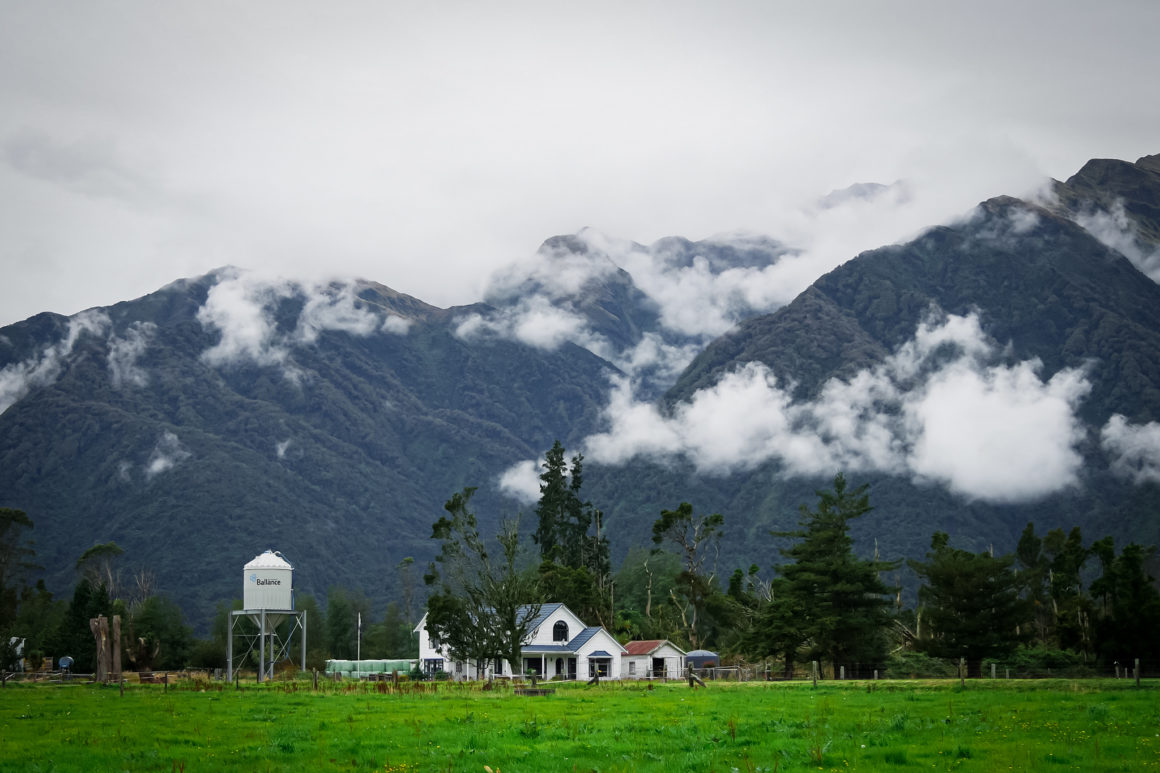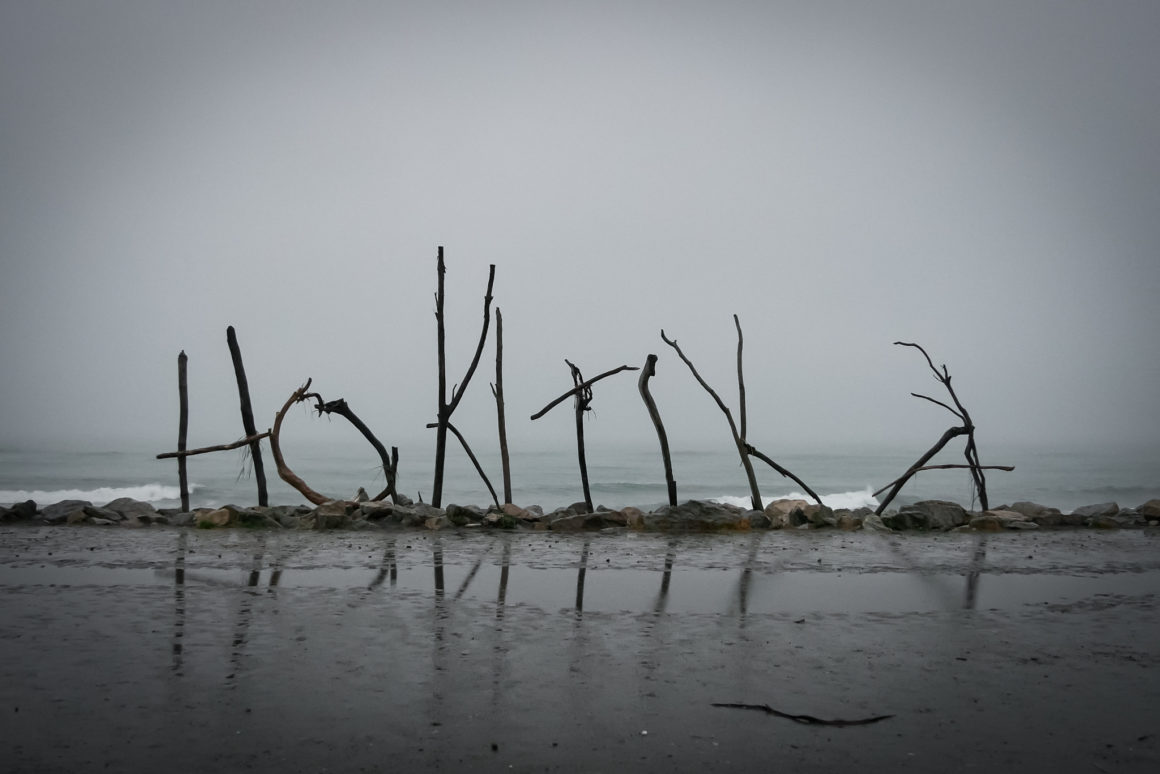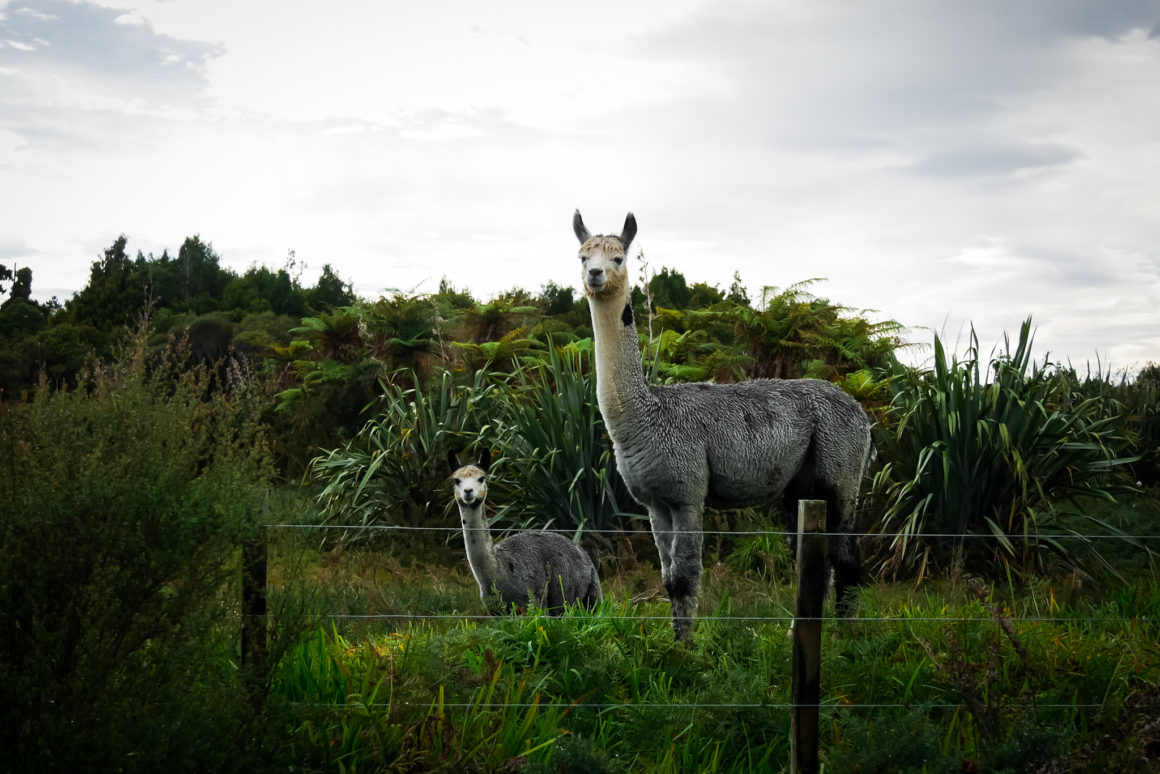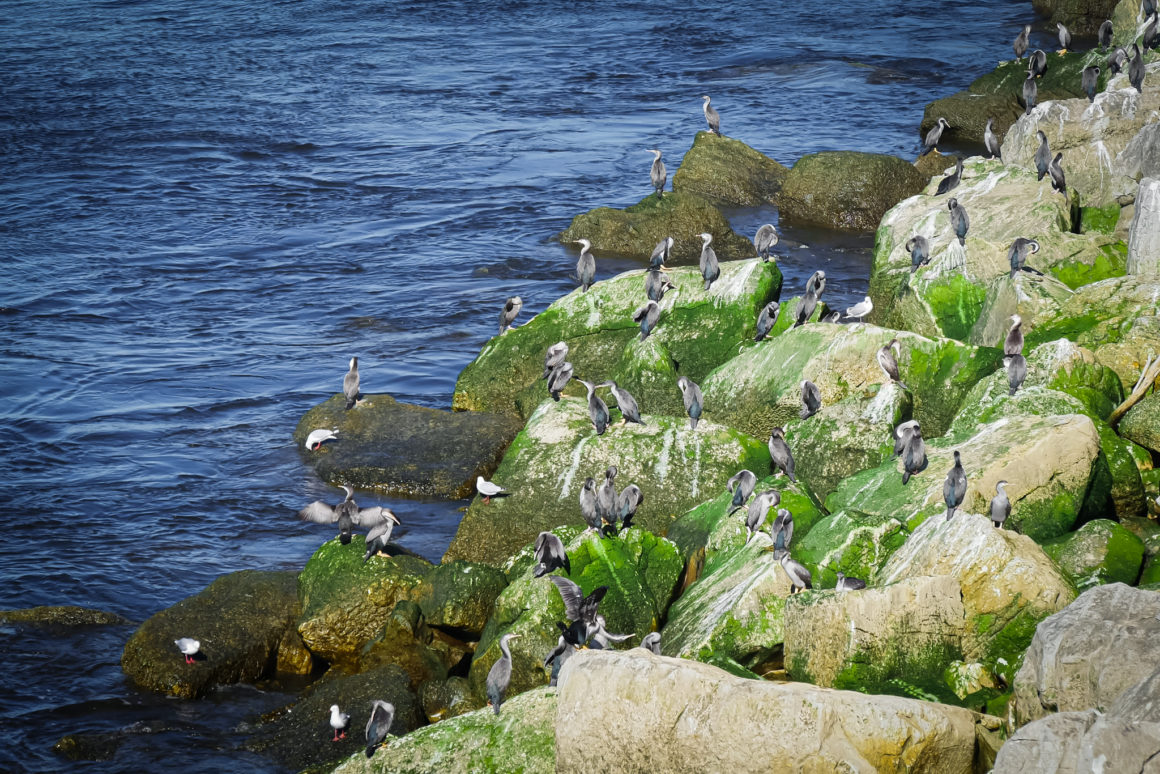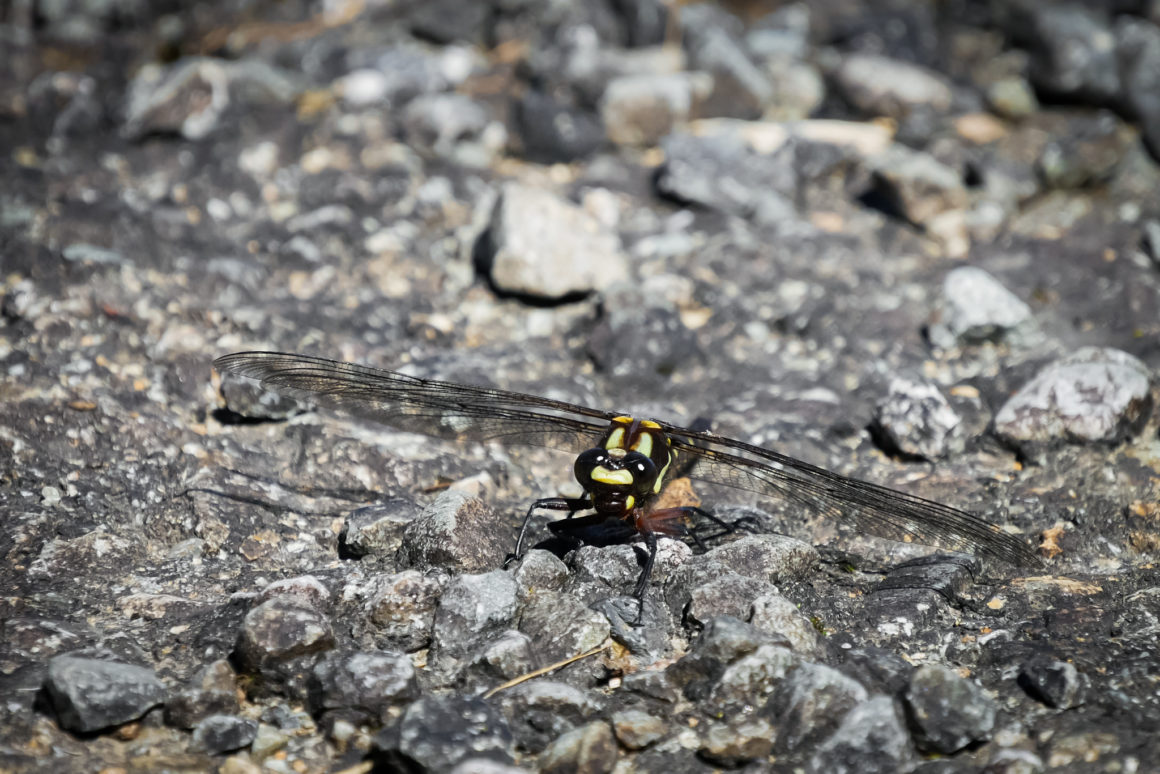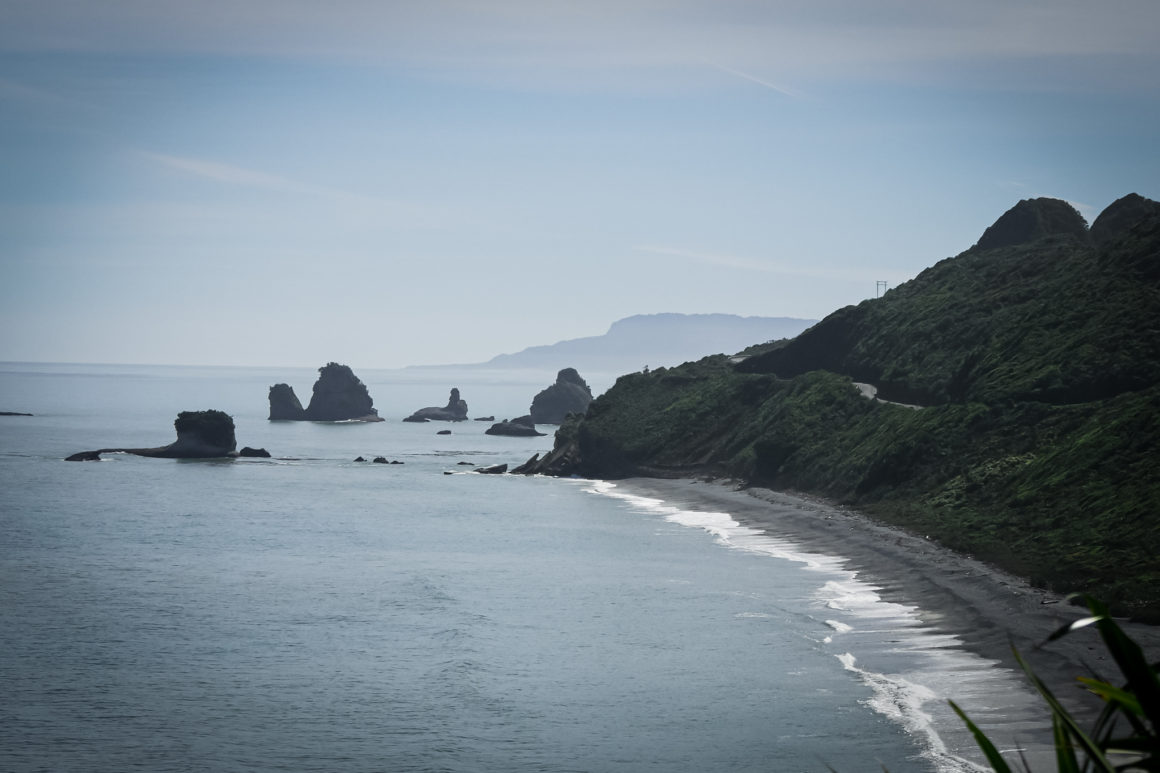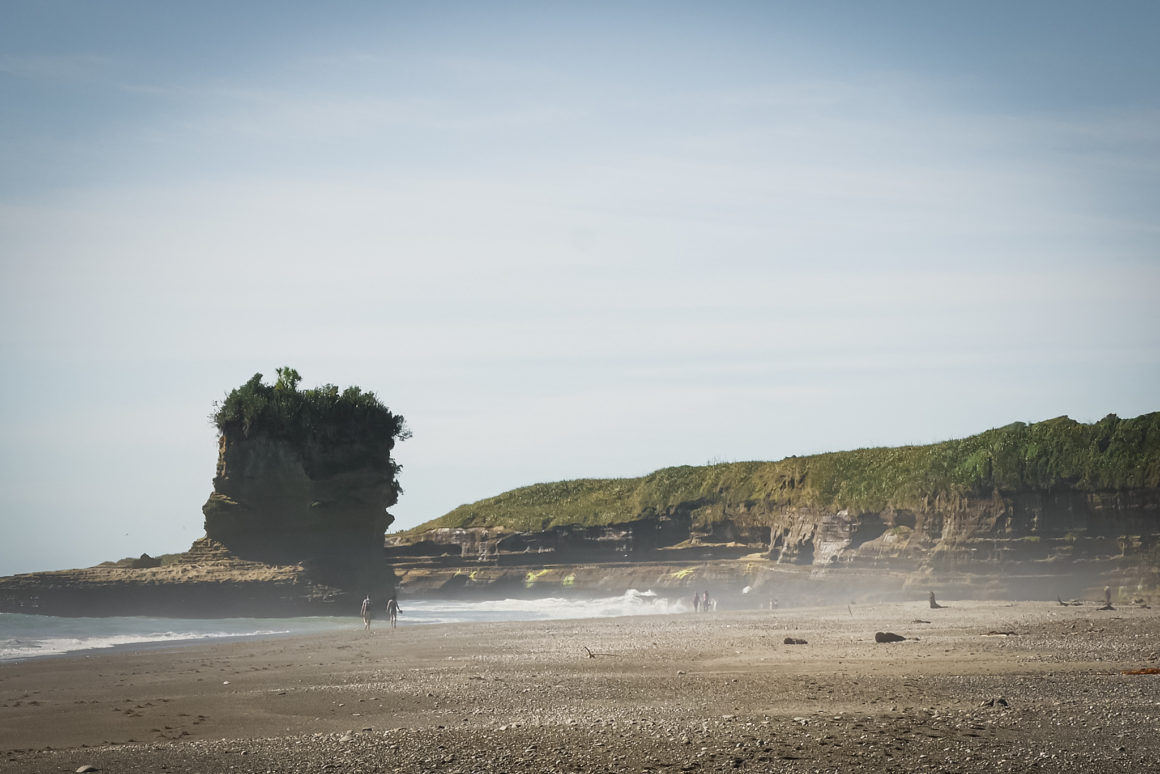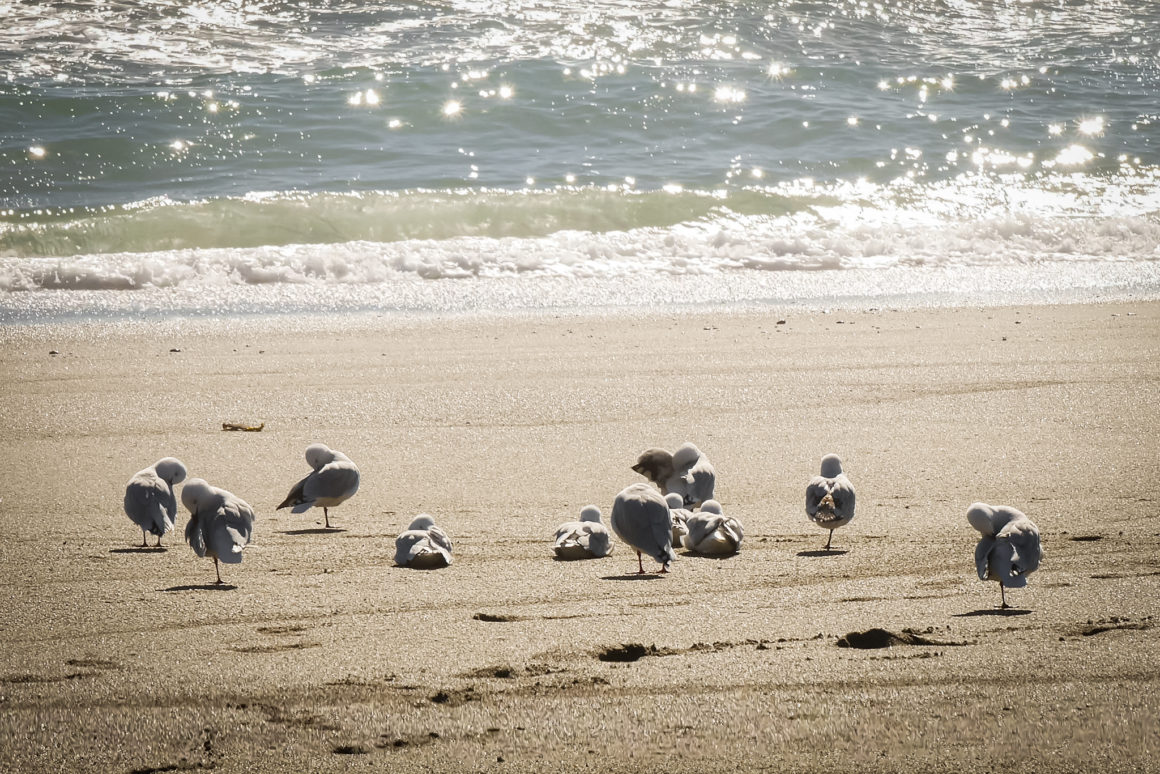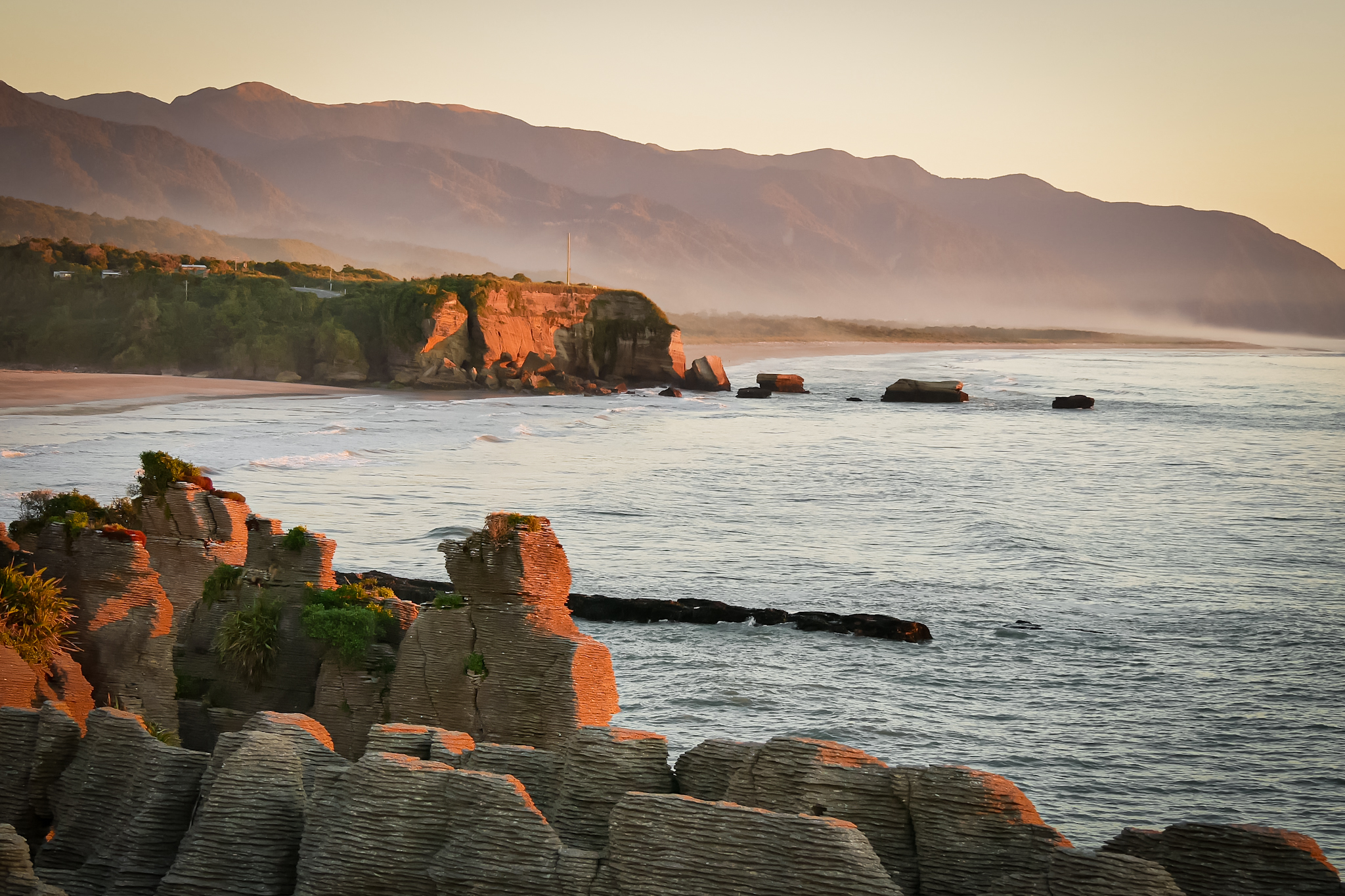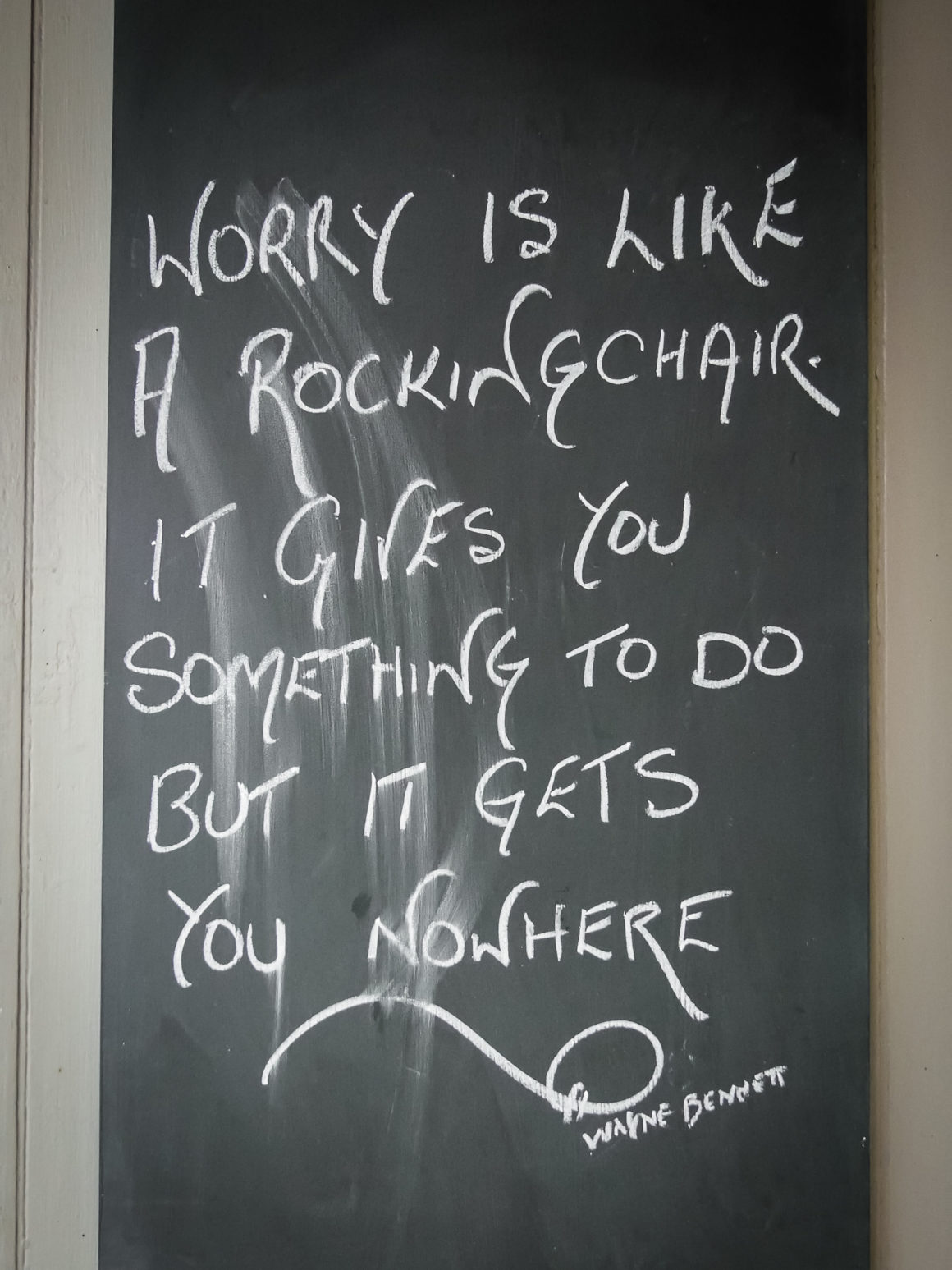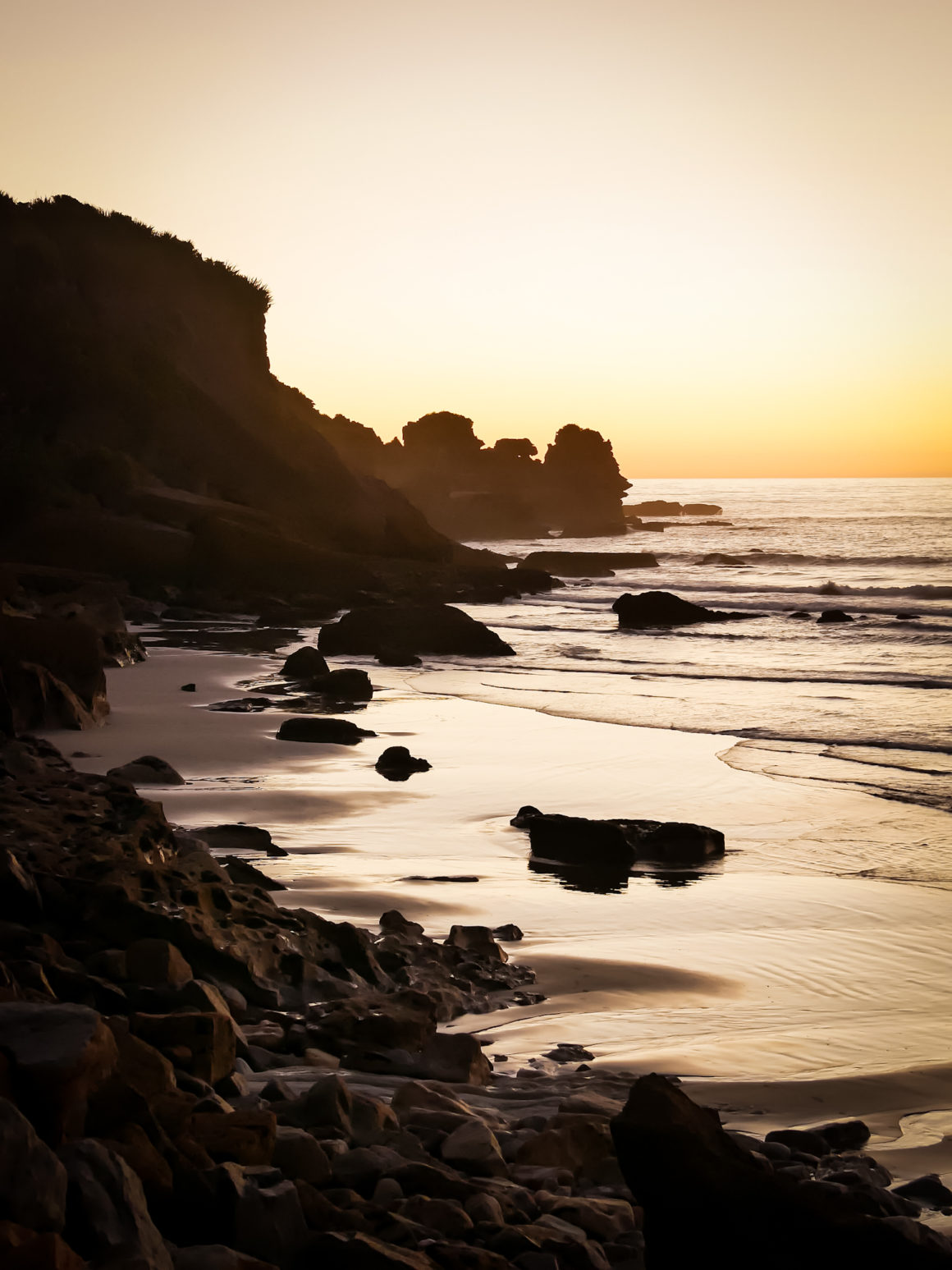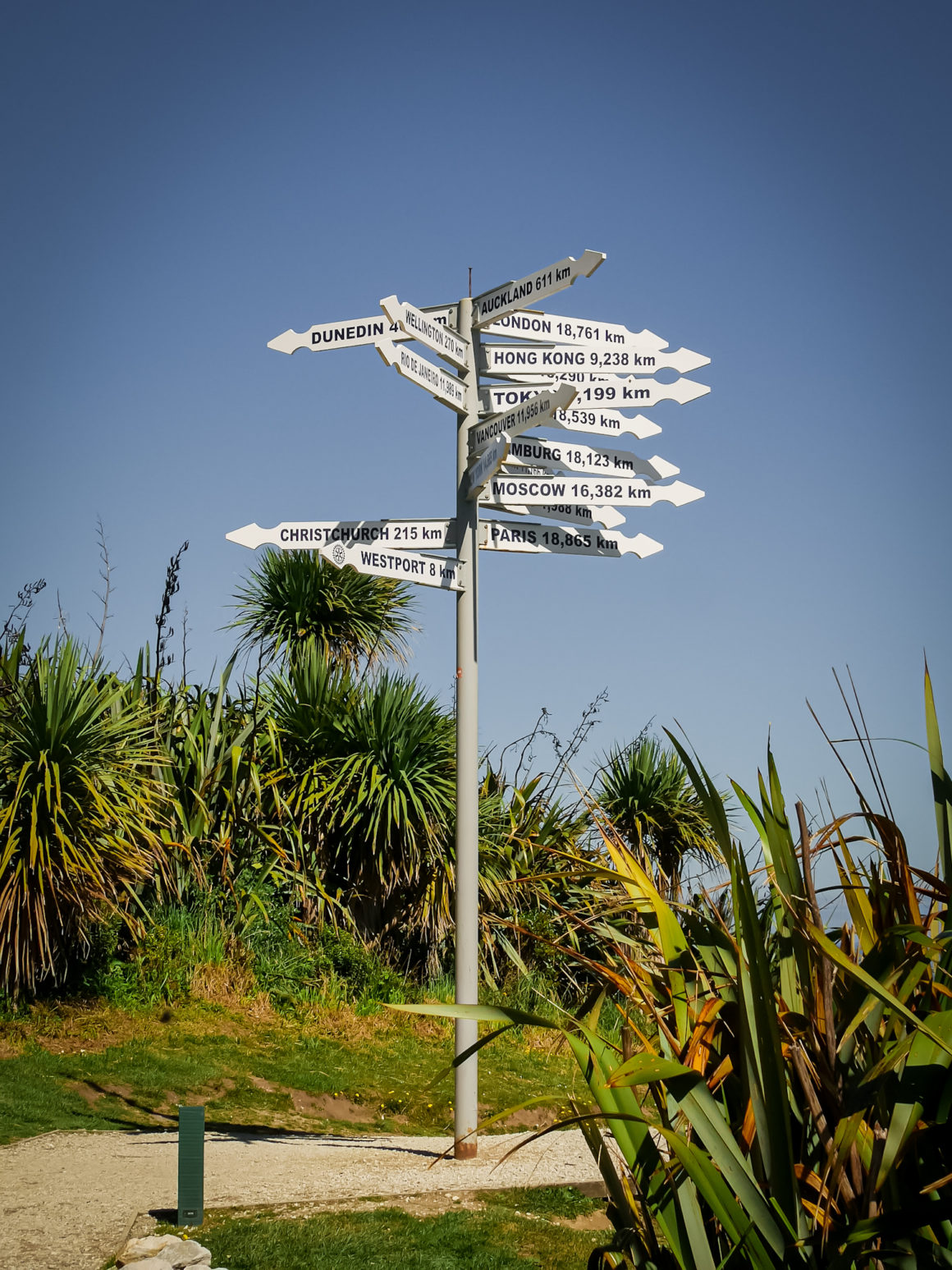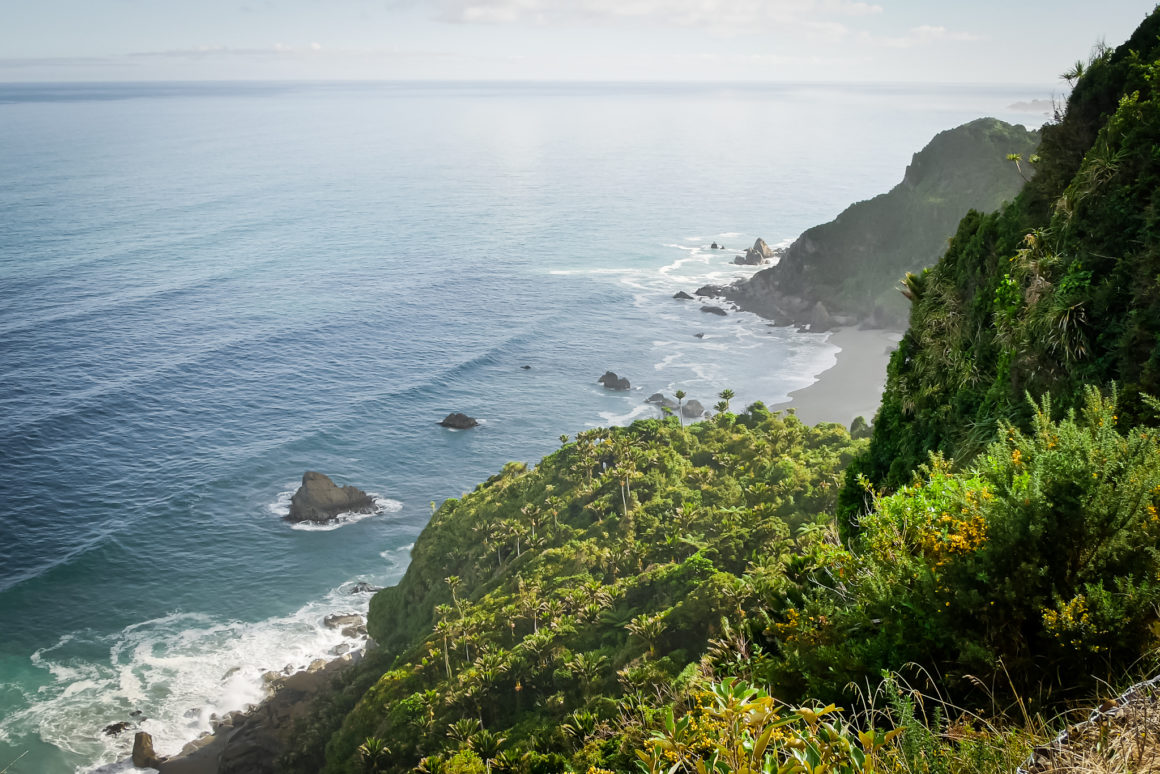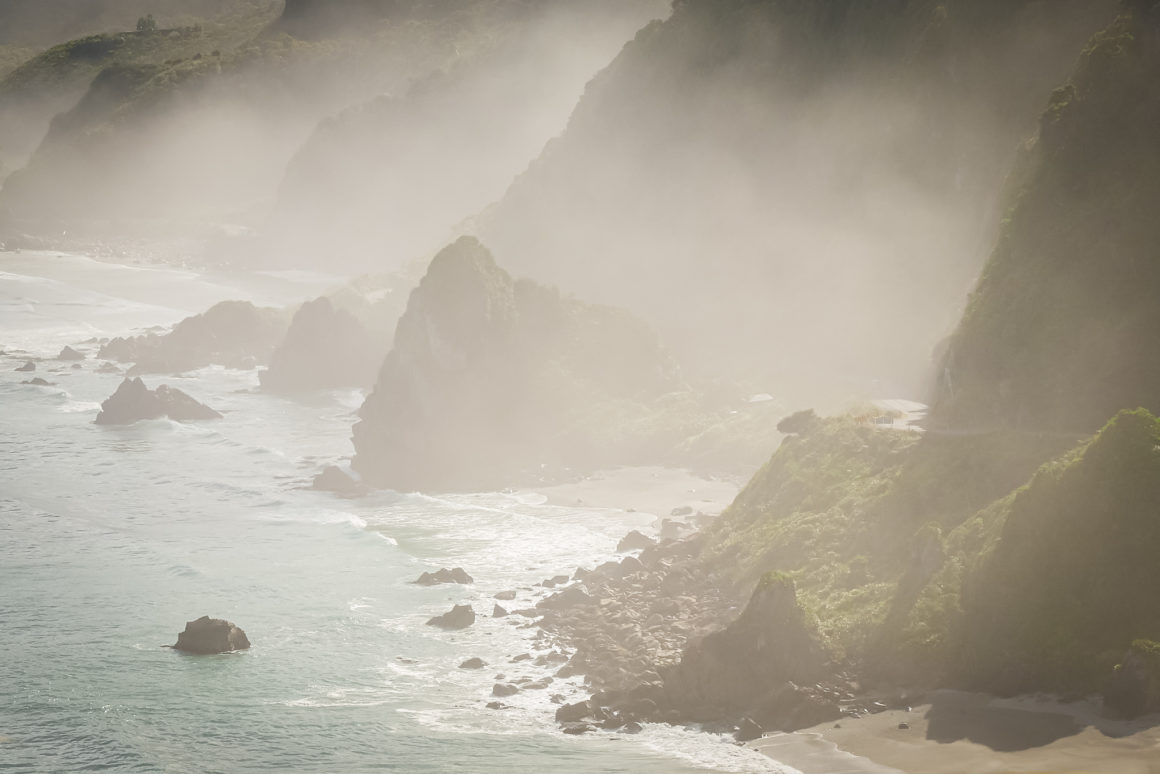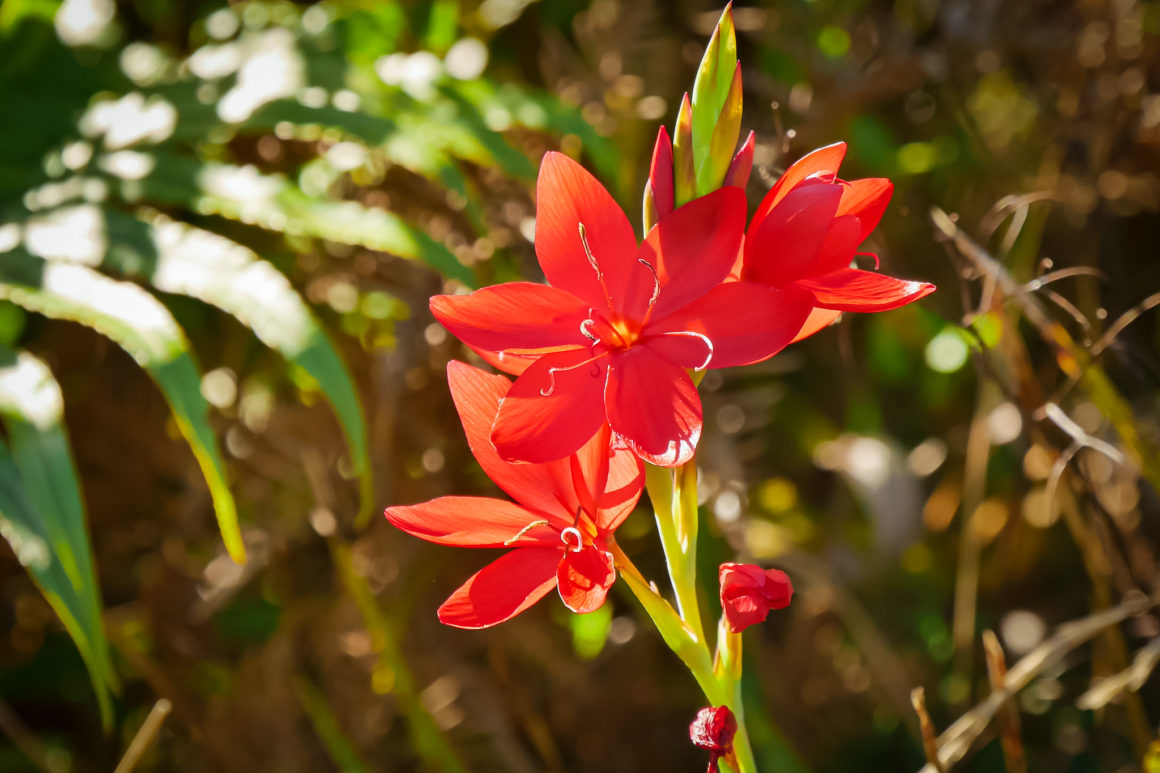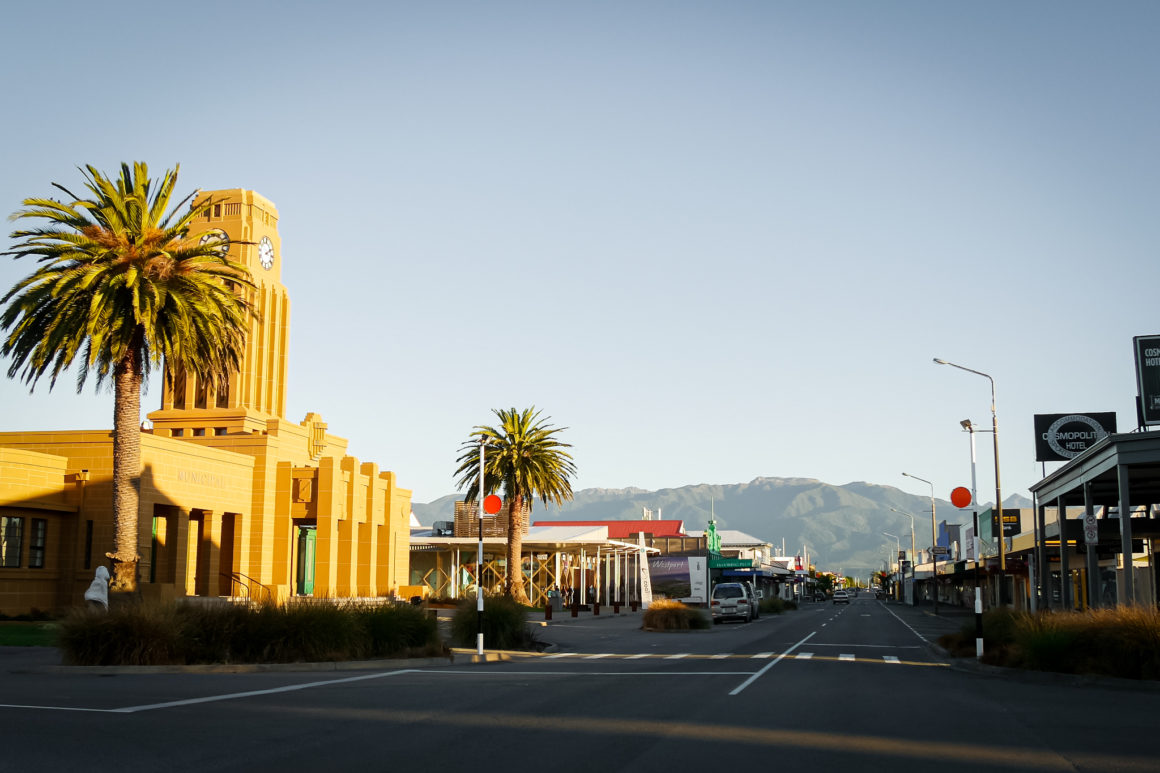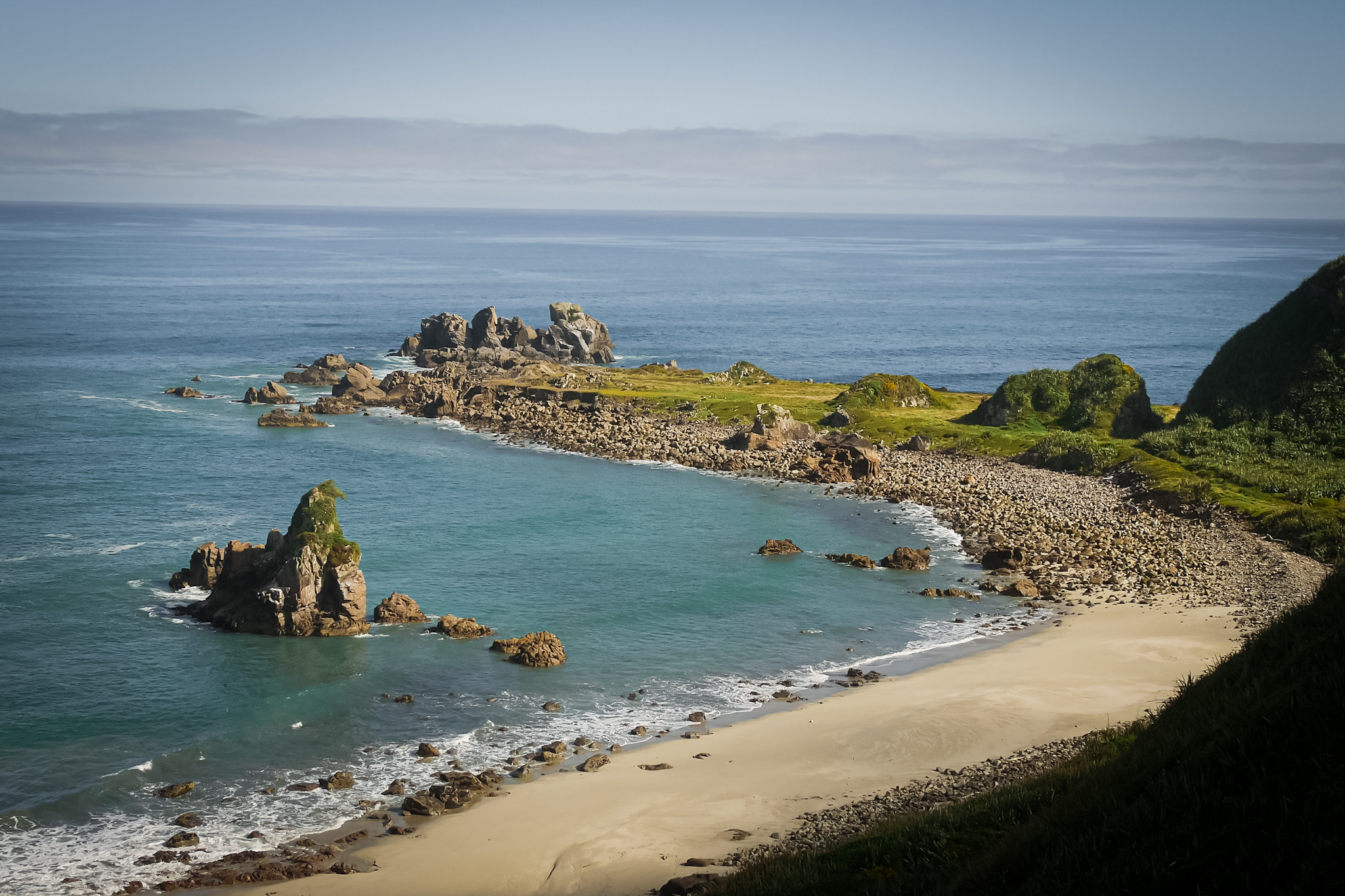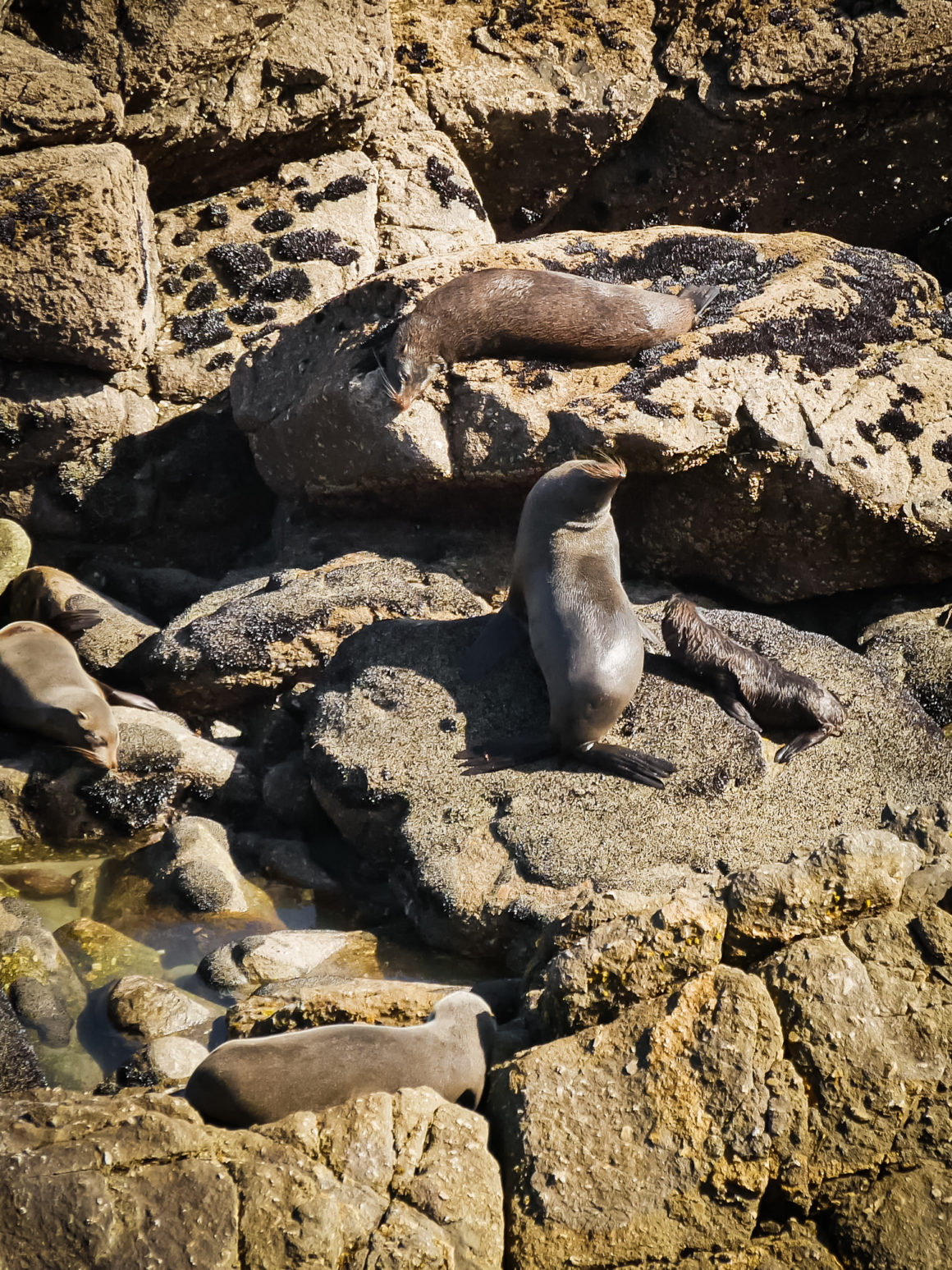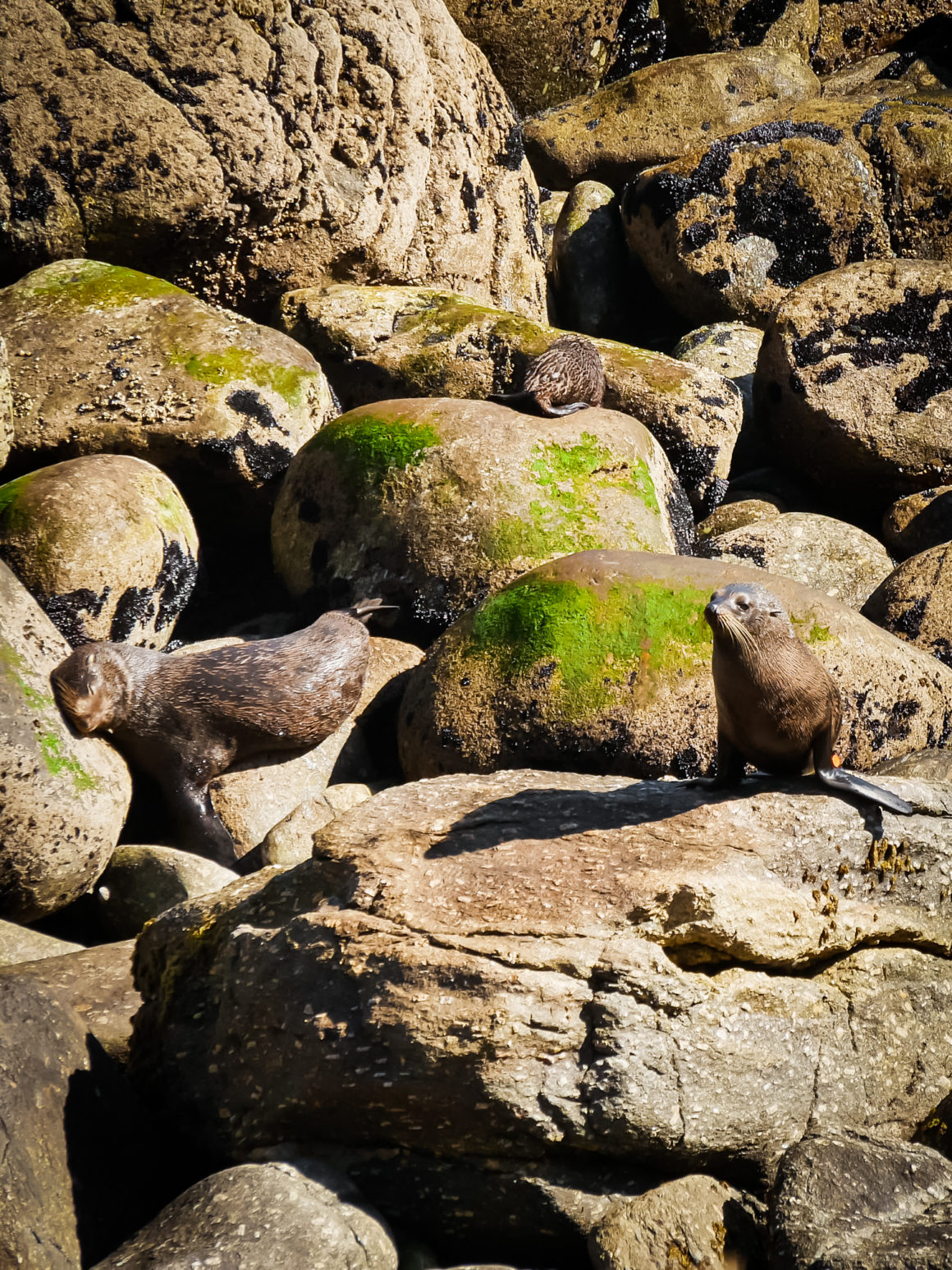DISPATCH
Jackson Bay is a tiny part of the world. The road stops at the small fishing village at the end of the bay. Beyond that, is untouched wilderness. The West Coast region stops, Fiordland begins. Apart from a few adventurous and fishermen, not many people push the visit to Jackson Bay. About fifty quiet kilometers through meadows, rainforests and the seaside. Along the coast, I saw dolphins making jumps in the waves.
Jackson Bay was the landing point for settlers from the region. Today, tourists come here to taste fish n chips or crayfish at the Craypot, a tiny gargote painted in red whose fame is growing day by day. The food is good but a little expensive. I bivouac out of sight beneath a huge tree. Camping is not allowed in the area but I have nowhere else to go. After the restaurant’s closing time, it is very quiet. Until the early hours of the morning when, after a splendid sunrise, fishermen of the area gather all together to start their day.
I leave Jackson Bay early in the morning to return to Haast where I embark on the road towards the North. It is another New Zealand. Different from Fiordland. Different from the central plains. Different from the mountains. Coastal and tranquil New Zealand. The Far West kiwi. A thin strip of land wedged between the Tasman Sea on one side and the New Zealand Alps on the other. No big cities here. Just tiny towns that seem to live in the past. And the exuberant and magnificent nature. The road is very hilly and I spend the day on the bike. Ninety-six kilometers on the odometer. My longest day so far. I arrive at the small DOC campsite in the early evening. The place is located on the shore of Lake Paringa nestled in the mountains covered with rainforests. It is already full of tourists and backpackers. It speaks mostly German. The lake laps quietly in the heat of the end of the day. As in the entire Queenstown area, valleys and lakes are located on the site of former glaciers that have since disappeared. At nightfall the nocturnal birds wake up. A whole bunch of sounds echo in the dark. Some are extremely melodious. Nearby, an owl makes calls. Apart from a few sandflies looking for human skin to prick, the corner is quiet. In the sky, the moon is almost full.
The next day the fog has invaded the valley. At dawn the lake is almost invisible through the mist. It will take a good hour for the moisture-laden cloud mass to begin to rise slowly. I continue on the hilly road towards Fox Glacier in the region of the coast called Glacier Country. Several glaciers descending from the mountains almost reach the sea. The small tourist village at the foot of Fox Glacier welcomes me at the end of the day under a cloud-laden sky. Lake Matheson is a must do for anyone passing by Fox Glacier, according to the brochure of the visits not to be missed in the area. The lake offers a perfect reflection of the Southern Alps and Mount Cook in the distance, which have drawn crowds since the first settlers settled in the region. Dawn and dusk are the best times of the day to view the postcard. That’s when the lake’s water is still. I go there as the night begins to fall and indeed the reflection is very beautiful. But the cries of the birds on the lake attract me more than the illusion on the water. They are almost invisible, hidden among the grasses by the shore. Some Pukekos (a kind of big hen of watery areas) show themselves, small spots of blue and red in the dark.
The next day I go to see Fox Glacier. A path starts from the village to reach the glacier, winding through the rainforest. Here, green is predominant. Unlike the Central Plains region where I was a few days ago. It is almost dazzling. The path goes down into the glacial valley, delimited by large vertical walls, to stop a few meters from the start of the glacier. The glacier has shrunk well over time and lacks a bit of panache.
The next twenty kilometers on the road climb hard to pass the Three Sisters, three big steep climbs. I did not have the courage to cycle them and take the bus to reach Franz Joseph Glacier, the other big glacier in the region. In Franz Joseph, the weather is torrential rain. This does not prevent a visit to the glacier which, under the overcast weather, offers a probably more interesting vision. The path follows the valley for forty minutes. Twelve kilometers long, the glacier almost descends to sea level. As with Fox Glacier, Franz Josef has also shrunk over the years. A hole in the cloud mass just above the glacier gives it a magnetic aura. It seems to radiate. Large white mass descending from the mountains, its size, even from a distance is impressive. At the end of the path, the small observation point is swept by wind and rain. Difficult to stay here very long. The mountain looks threatening. But despite the difficult observation conditions, I have the strange feeling of contemplating the location at the best possible time. The place seems to have a mysterious aura.
It has been raining for two days now. The mountains are covered with fog and I am slowly getting wet. My things are permeated with a smell of humidity that spreads everywhere. I left Franz Joseph Glacier and I travel the kilometers calmly rocked by the lapping of the rain on the asphalt. With the mist and the gray veil, the places seem to be inhabited by a mysterious presence. Memories of Japan come back to my mind. Same mountains covered with green forests, same patches of mist, same winding roads through the hills. And the sea never far away. Along the way I meet the New Zealand guide of a group of cyclists who speak French. He offers me a check of my bike and leftover food. Wraps, cheese, slices of meat, kiwis, etc. What generosity! “Thank you very much!” “No worries, mate!”
My campsite this evening is a tiny DOC campsite wedged between the road and Lake Ianthe. I get there in the pouring rain. Someone had the extraordinary idea of building small hard shelters. The ground is covered with pebbles but that does not matter, I am dry. Kiwis with a small bus transformed in a motorhome are already there. We share a cup of tea and they tell me that many Kiwis travel on transformed buses. These are school buses that come from Japan. A New Zealand company collects them and transforms them into living spaces. A great idea and typically kiwi, I think.
The hard shelter is a blessing. It rains all night. I push back the time of my departure the next morning hoping that the rain will stop but this is not the case. At 11am I decide to leave. I will be wet. Hokitika is only 40km away, it is not that far. As I start to prepare my things, a man walking his little dog offers to drop me off. No worries, he can put the bike in his motorhome, it makes him happy to hep me! Margaret and Neill are two elderly Kiwis living in Rotorua on the North Island and traveling on the South Island. Their little dog Henry, all wet but not bothered by it, roams the cabin while we are driving. We talk about New Zealand politics and history. They are very nice. When he learn that I worked in Te Anau, in Fiordland, Neill congratulated me. For him, this is the heart of New Zealand. This is where you have to go to understand the identity of the country.
We arrive in Hokitika under an almost open sky. The rain stopped. Finally. We share a meal on the beach (kindly offered by Margaret) and they offer me to come and spend a few days at their place if I go back to Rotorua. I leave them almost sad to go. I set up my wet tent at the campsite outside the city. I plan to go back to the beach for the sunset but by the time I leave, it starts to rain again! In five minutes I am soaked. Si I settle with a visit to the Glowworms Dell, a dark little hollow on the side of the road where there is a colony of glowing worms.
I leave Hokitika under again a gray weather. Barely two hours to reach Greymouth, a small town a little bigger than the others. I walk along the coast on a pleasant and odor-filled cycle path. Mix of sea scent and flower scent. The sun is back. Arriving at the campsite, I dry all my things at the small campsite. I feel good. Greymouth seems to be living in slow motion, stuck in its legacy based on the gold rush that shook the entire region during the 19th century. At 5am sharp, all the shops close. My journey does not prevent small pleasures and I spend the end of the evening at the cinema. Only one other person in the room for the screening of Kong: Skull Island. The film is nothing special, but it is entertaining. I go out for the sunset which tints the horizon of red and I feel invaded by a feeling of fullness.
For the first time in a few days, I pedal feeling happy. Yet the road does not stop going up and down. But the weather is fine, the cry of the cicadas rocks my ears, the smells excite my sense and the road is beautiful. The road is really beautiful. It is the best part I have made so far. I snake along the coast. Cliffs, tropical forest and rolling waves. About fifty kilometers after Greymouth here I am arrived in Punakaiki. The campsite is right next to the beach. The atmosphere smells of fullness and tranquility. The main attraction of Punakaiki is its particular rock formation at the edge of the sea. For millions of years, the sea, the wind and the rain have carved the rocks composed of several layers of limestone, forming what people here called Pancake Rocks. Because it reminds them of pancakes stacked on top of each other. They have imagination, these Kiwis. I await the sunset which illuminates the top of the rocks in red tones. The moment seems magic. A bit of a shame that this is spoiled by the other tourists present on the spot. Some smoke, others put on music, Chinese call out to each other … Mass tourism destroys any possibility of immersion.
The last kilometers on the coast are very beautiful and very wavy. The vegetation changes. Small Nikau palm trees add to the landscape. These appear here because the north coast enjoys the warm climate coming from Australia. 1930s architecture and Victorian homes mix in the streets of Westport. The atmosphere seems suspended in the air so the streets are calm. The few shops stretch along the main street. At the end is the sea. I can see the coast stretching in the distance. Feet in the sand, gazing at the horizon I feel like something is ending. The moment seems important without my knowing why.
The next day I go back and forth to Cape Foulwind and its seal colony. The Cape is about fifteen kilometers from Westport. The road is quiet. The weather is magnificent at the cape. A path winds along the cliffs from the lighthouse to Tauranga Bay where the seal colony is located. I hear the cries of the seals before I see them. A colony basks on the rocks at the edge of the cliff. A bunch of little ones move awkwardly but quickly on the rocks. In a small swimming pool protected from the furious waves of the sea, young ones abound. They were born a few months ago and are still in the learning phase. From a small promontory, you can observe the animals living a few meters below. I could spend hours there. Their behavior is extraordinary. Marine mammals seem so clumsy when hoisting themselves on rocks with their fins. While being very powerful and agile. The little ones have fun. Adults are looking for the best place to bask in the sun.
I left Westport at the end of the afternoon to reach Richmond by bus in just four hours. The city is located in the Tasman region, the north coast of the South Island. I have decided to take a break for several days to go hiking on the Abel Tasman Track.

